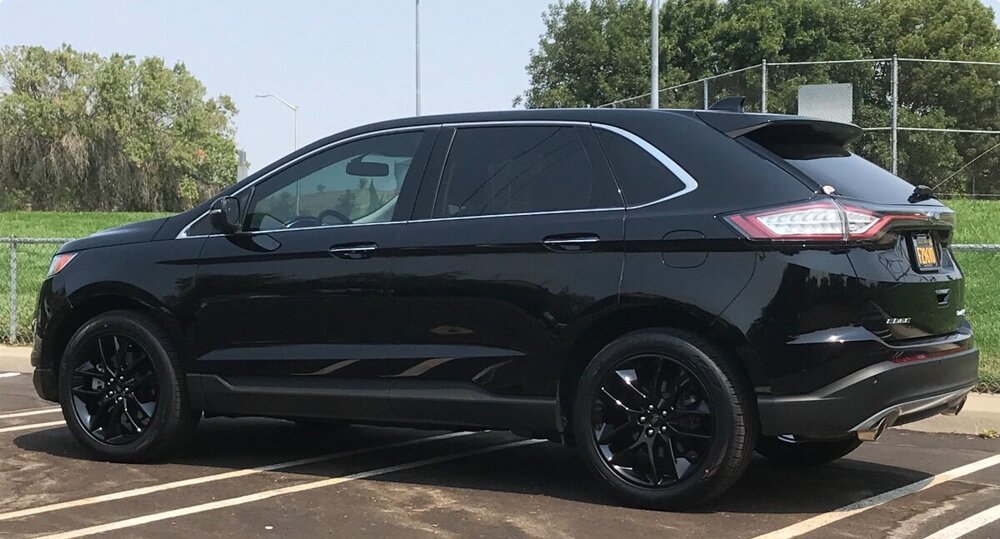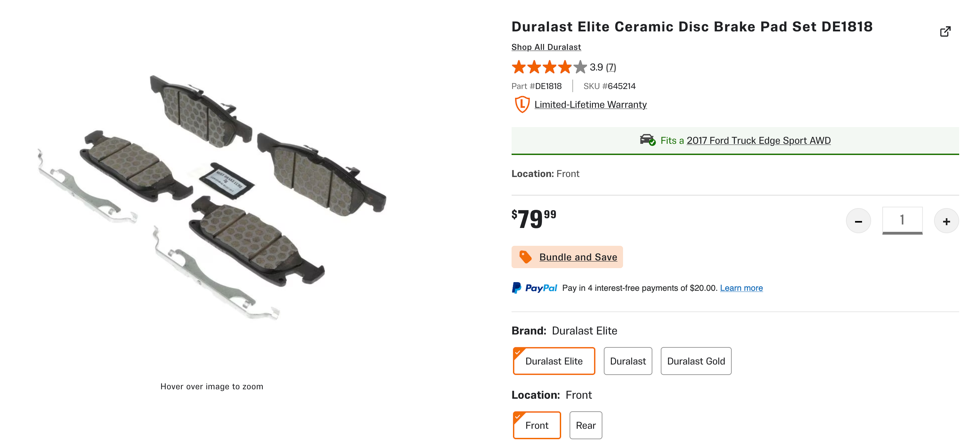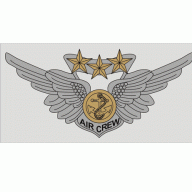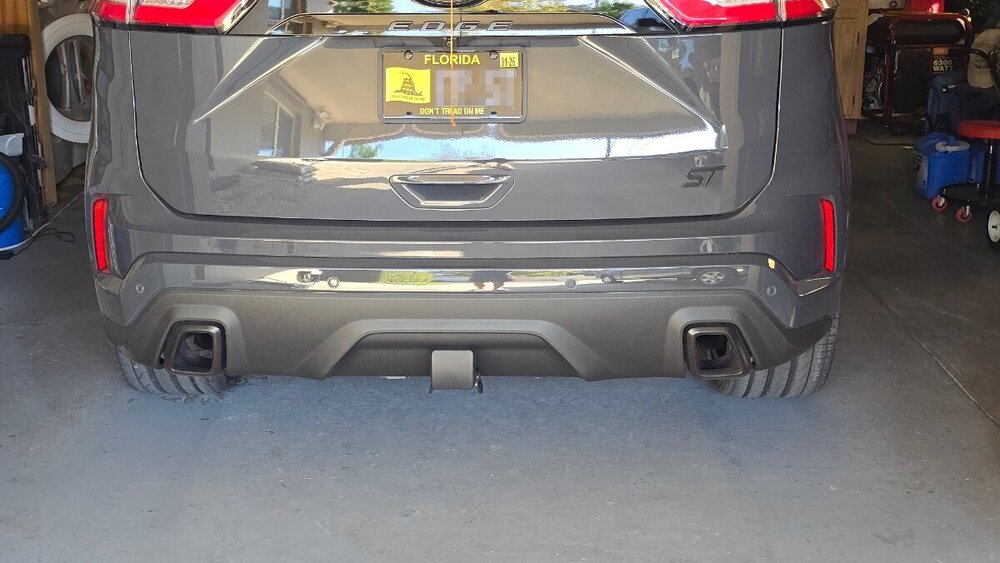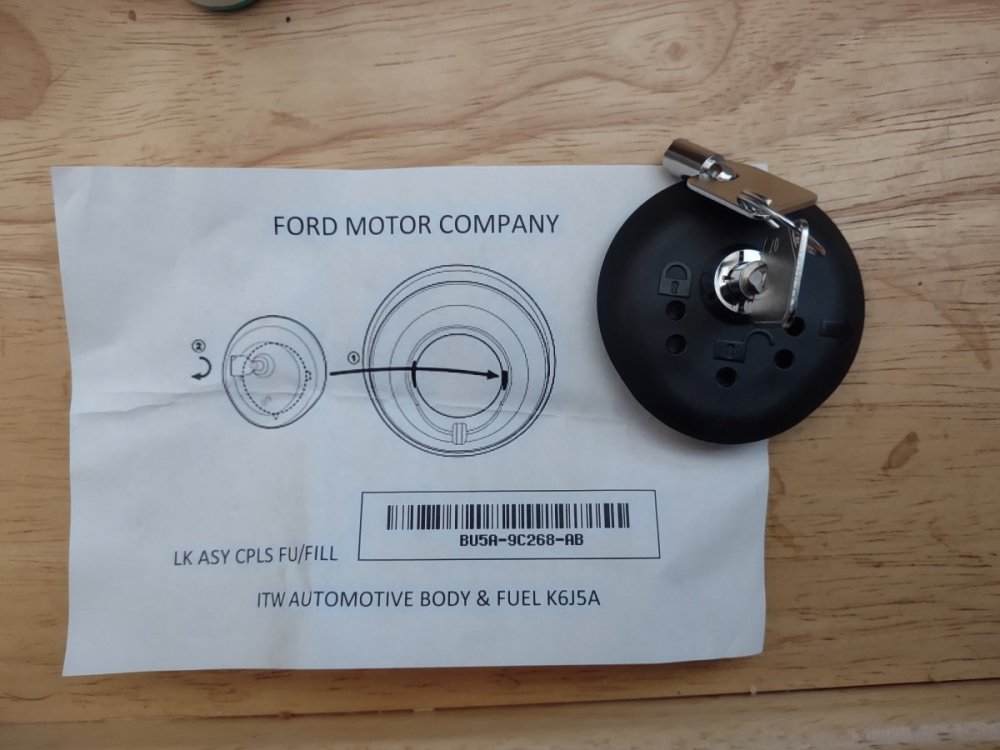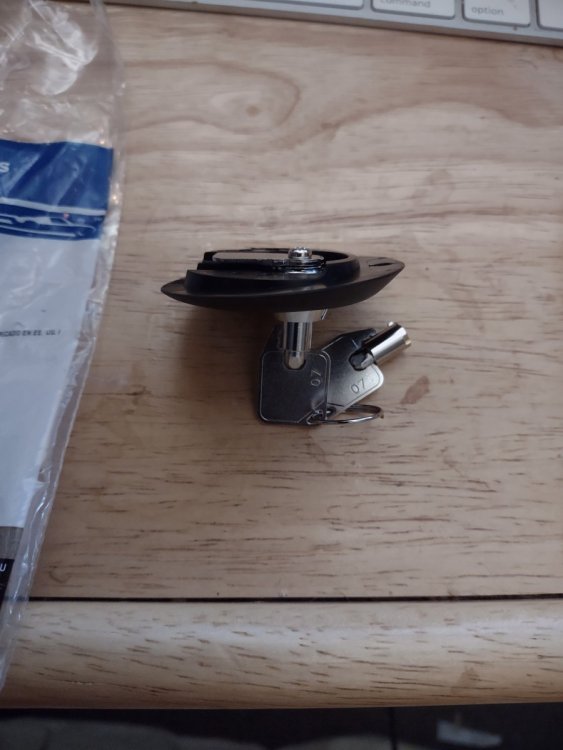Leaderboard
Popular Content
Showing content with the highest reputation since 11/22/2025 in all areas
-
3 points
-
UPDATE, I did the same thing fishx65, used one of those Velcro pads and wedged it under the clip. No more rattle! What a nightmare that Ford could not figure this out. Thanks for this Forum.3 points
-
Checked my records and the failed pads are Centric Posi Quiet - definitely avoid those. https://bobistheoilguy.com/forums/threads/centric-posi-quiet-pad-delamination-on-both-sides-pic-included.356932/ .3 points
-
Today I installed the RH CV Axle. The only battle I had was extracting the axle - all YT videos show smacking the inner joint with a hammer - I even went to Lowes to get a heavier hammer, and that didn't work - see the section of all-thread and nut in the photos - I cut a length of all-thread to fit snugly between the inner joint and a bolt head on the PTU, then holding it with a pliers I backed the nut out and as it reached the end of its thread the axle was free to extract - way better than beating on it. The I noticed the friction material had come off the outboard brake pad - went to Autozone and got a set of new pads - found the same thing on the LH. The LH CV Axle cured the vibration but I could still just a little at exactly 60mph with acceleration - that is gone now. The inner joint on the RH axle had similar wear divots, just not as deep - the lubricant didn't run out like oil as was the case with the LH, but it looked an odd brown color.3 points
-
I have the official printed version of the wiring diagram for the 2018 Edge. There is a good chance it is the same as the 2017. It shows that there is only one version of the wiring diagram for the headlamps. I think this is a pretty reliable source. It shows many instances where there are different wiring schemes for different equipment on the car. There are three fuses. F62 and F67. Both are 50amp that go to the BCM. One for each side. The third is a shared 10 amp, F20. (this might be for the HID igniter). I think there is a very good chance that they will work with the existing hardware and require a change with Forscan only.2 points
-
Looks like the issue is solved. It appears that the previous owner hit a curb or something quite hard with the left rear wheel. It shifted the subframe slightly and bent the control arm. On dry roads there was enough resistance on the rubber that it didn't slip but as soon as it hit slippery the left wheel that was out of alignment would slip causing the swaying. I assume the tires were wearing badly which is why they put the new tires on it before selling the vehicle. Wasn't super expensive to repair. Alignment is good and runs nice and straight on ice now.2 points
-
"Sometimes..."? I think most times. The search functionality on these forums is just not very good. Not just this forum, but almost all forums I visit. I have never had much luck finding anything on any of the forums I am on. But your advice about using Google is spot on. It even sometimes brings you to the very thread in a forum you were trying to find! Very frustrating.2 points
-
I haven't heard of a software configuration that could be manipulated by the likes of Forscan. The RDU coupler can be disconnected which will make it permanent FWD.2 points
-
This problem seems to happen with many Fords. My battery is almost 6 years old now. I have had the symptoms for about a year now. No start stop, radio powers off, no Fordpass, no keyless entry, etc. However, AGM batteries do a better job at hiding symptoms of a bad battery than lead acid. An old AGM battery will still start the car, but the battery will be very slow to accept charge. Some battery testers can be fooled by AGM batteries. Conductance testers estimate battery health by sending a tiny AC signal into the battery. AGM batteries will often show normal voltage, okay conductance, and acceptable internal resistance even when the battery is old and nearly worn out. Battery testers that actually put a real load on the battery will reveal the true battery health. The Edge is equipped with a slightly smaller H6 battery, while the Lincoln Nautilus is equipped with a slightly larger H7 battery.2 points
-
Does the Edge have an undersized alternator? I do drive many short distances, but it only takes a couple of trips for the start-stop (yes, I know everyone hates that) to stop working and in about ten days, I get the battery saver message and all but the driver's door cannot be locked/unlocked from the outside. I have had the battery checked and replaced, but the problem did not go away. I bought an AC battery charger (Battery Tender) that plugs into my cigarette plug. I keep it on the charger when I am at home. It is a pain since I have to roll down a window to plug it in, but I do not want to get stuck somewhere. I have the first electric Edge!2 points
-
being a computer guy, finally getting a vehicle with a computer and way to eff around with was peak curiosity. So far i have done the following using Forscan: Police Mode locked gear shift - Enabled Double Honk when running and exiting - Disabled Turn Signal flashes when tapped - 6 (increased from the default 3) Seat Belt Chimes - Disabled Door Ajar Chimes - Disabled Key Fob Remote Window Close - Enabled (only remote window open was enabled) Police Dark Car Mode - Enabled Silent Mode on Left Cluster Screen - Added SiriusXM as a media source - Disabled SiriusXM Travel Link - Disabled Climate Section on Right Cluster Screen - Enabled Sync3 Splash Screen - Raptor (changed from the default Ford logo) Auto Door Relock - 30 Seconds (lowered from 45 seconds) the only other things i was going to do in Forscan at this time from what i read were: - add the option to disable DRL into the IPC and enable the ability to do disable (being in Canada its mandatory to be enabled) - remove the turn signal from always being illuminated and only being active when turning (i think i saw someone do this on an earlier page - pg6 maybe) i updated Sync3.0 to Sync3.4 using Synupdater3 from Cyanlabs....such a nicer look and feel. i was also scanning through https://www.fmods.net/ but haven't yet done any mods or app installs but some do intrigue me.2 points
-
i'll just pick up a set of glossy blacks vs getting them painted as they are beat up over the last 8yrs.2 points
-
Good news, keeping the edge. Got it fixed cheap, probably gonna fall apart in a few years but hopefully get me through college.2 points
-
Feeling adventurous? These go in your side mirrors. $18 https://store.ijdmtoy.com/products/2-amber-33-smd-sequential-led-arrows-for-car-side-mirror-turn-signal-lights https://store.ijdmtoy.com/products/2-super-red-33-smd-sequential-led-arrows-for-car-side-mirror-turn-signal-lights2 points
-
My current edge has this problem and I am pretty sure it is a tire tread pattern issue with grooved pavement. The bridgestones I'm driving on came new with this car (used purchase) and they have three deep center channels that run the circumference of the tire. It is my theory that these channel edges catch the grooves and walk with them until they change direction leading to the 'walk back and forth' motion from the rear end. It is my belief that any tire with pronounced center channels will have this problem. I've driven the same grooved roads before with nokian tires and not experienced the same motion. This is my professional amateur pseudoscientific theory of tire drift on grooved pavement.2 points
-
2 points
-
New CV Axle installed and a trip on the interstate confirms that was the issue all this time. Much easier job than the control arm replacement and with that said I might just go ahead and replace the right side. The old inner joint felt just a little rough and the reason can be seen in the photos - also the lube appeared to be gear oil, not a grease, or maybe it was grease when it started out.2 points
-
I agree. When it comes to parts you can't go wrong with OEM. It's a no brainer. But when it comes to lubricants, in many cases there are better options. And there are some good ones: Amsoil, Red Line and Motul are by far the best. The key is Full Synthetic. I plan on going with Red Line for my PTU/RDU. Any suggestions from you guys on the transmission fluid? That's the one I haven't done any research on.2 points
-
I got some Osram Nightbreaker bulbs coming in next week and I’ll be doing the install. I got a printout of the as built from the car I got the housings from and my current as built information so I know exactly what is different and what to change in Forscan. Will report back once install is complete.1 point
-
I found two that are available. Ebay has one for $149 including shipping. 2007-2010 Ford Edge Rear Bumper Parking Sensor Wire Harness 7T4T-14N139 | eBay The other is from a salvage yard in San Fernando, CA for $149 (plus shipping?) FORD EDGE WIRE HARNESS REAR BUMPER PDC 2007 2008 2009 2010 INCLUDES SENSORS You might check your local salvage yards as this part fits all models from 2007 to 2010.1 point
-
1 point
-
AWD and 4WD are very different. I don't think whatever you are trying to do is even worth trying. If you want 4WD, buy a vehicle with 4WD. What Edge and what year do you have. For example, the Edge ST has an AWD Sport Mode (double tap the ESC button) that makes the AWD system much more active and aggressive. What model/year do you have?1 point
-
After having a few serious issues with my 2021 ST, I decided too purchased an extended warranty. 8 Year/60K, I only drive about 5K a year. I called ford corporate to verify the warranty and kept a copy of the transcript. I have heard too many stories of people having issues right out of warranty, it gave me piece of mind, and I am glad I did it. I hope I never have to use it; I hope my dealer goes to bat for me if I ever do. So sad to see dealers take advantage of their own customers.1 point
-
Monro quality has gone down the tubes. They used to be so good but we don't even use them at my shop anymore.1 point
-
I assumed the OP does not have a lift so I was offering a simple DIY for a quick help. As you know, most people can't tell where most sounds originate (F/R L/R). On most client's claims of sound origins, I would Inspect the exact opposite corner first. In a higher percentage of times, they were wrong thus cutting my time and the $$$ they spent with me! (WIN WIN) With these cavernous insides of these Edges, put the seats down and boy do they get LOUD! For years, I did Rattles,Squeaks and Bitches with "Grandma's Grocery List" a mile long! I have ridden all over a car in search of a client's satisfaction of a noise elimination. From riding in the back seat ( aahhh heating and A/C in the right season), multiple trunk rides for several miles inside and outside, clinging for life in the hood was the most scary! But, I never tried holding on with a stethoscope!🤣1 point
-
Problem solved. To try the cheap stuff first we changed plugs (it was due anyway since it's now at 270,000km) and the purge value since it was also inexpensive and easy to reach. We took it to an independent mechanic and they said they could not find anything wrong but they didn't have the ford specific scanners or tools to check things like fuel pressure. They replaced the PCV hose but that made no difference. We took it too the dealer and they said no codes, but the purge valve was leaking and the battery was low (I thought it odd to even test the battery since the issue reported was cranking excessively). We had them replace the purge valve (maybe the aftermarket one was bad) and suggested they test it by getting it up to operating temperature and trying to start it. The long start was still there when we picked it up but it was after hours so we had to reschedule. We then changed the battery on the off chance some low voltage condition could be contributing and the battery had a 2018 date on it. We dropped it off with them again and complained about their poor diagnostics and lack of follow up testing. We did not want them to just throw parts at it and hope for the best. This time they found a problem with the fuel pump so we had them change it. We didn't want to reward them with the extra business, but wanted to be able to hold them to account if they were just blindly replacing parts. It's been over a week with the new fuel pump and it's back to starting correctly. It still seems odd that the symptom only appeared when the engine was warm, but it's nice to not get all the stares in the parking lot when it cranks over so long before starting.1 point
-
Your SEL has the IKT (the key start, key has the remote fob on the head). There are aftermarket remote starts that are easy to add that use the factory key (usually lock/unlock/lock sequence). You have to have 2 already programmed keys to successfully use the aftermarket kits.1 point
-
I'd rotate the tires. If the noise moves, then you have found your problem. If it stays the same, then there's something else going on. But the rotational noise you're getting could just be bad tires.1 point
-
20s may be easier to find than 19s but I agree that the tire may not do so well off road. Could always get your stock rims painted!1 point
-
1 point
-
The guy wants it to stop working. The remote control is fully functional. Everything is fine with that.1 point
-
Good morning, hope you are well! Just wondering if you have any updates on your issues, you are having as I too have been having similar issues. The one thing mine is doing that you didn't mention is the radio pops up with an error message saying something about power save mode when turning the car off, and a progress bar begins to scroll across the screen, and then eventually shuts off before the progress bar even completes, and this is with a brand-new battery and alternator. Thanks for any replies to this that you may have!1 point
-
I also was a tire salesperson in Southern California in the early 80's (those days are long gone - sigh.) There was this one customer complaining about tramlining (that term had not been invented then.) The tires were Goodyear Custom Polysteels. There were seven circular and uniform grooves on the tires. We thought that the grooves were interlining with the grooves on the freeway. We changed them out with the Arrivas and the squirming went away. I would have thought that since that time, the manufacturers would have been able to resolve the issue. In doing research, I found that it may be also caused by low profile tires, larger than OEM tires or wheels, or tires with reinforced sidewalls (which are very rare - most tires have a single-ply casing with two steel belts overlaid on the carcass.) I found some tires which do not have circular and uniform groves: Nexen N Blue 4Season2, Kumho Solus 4S, Nitto Motivo 365, Pirelli Scorpion Weatheractive, Michelin Crossclimate2 and Toyo Proxes STIII. I suppose the best way to diagnose if your problem is being caused by your tires/wheels is to find a buddy with a same generation Edge with the OEM wheels and tire size, mount them on your Edge and see if the tramlining goes away.1 point
-
I almost always have this "issue" with new tires, especially Michelins. But after a couple of thousand miles, it goes away. I still stick with Michelins, as I've been using them forever, and never had any problems with them (above temporary issue noted).1 point
-
This may or may not be helpful, but with my 2019, I have to press the "s" in the center of the gear selector in order to engage sport mode. Mine then won't shift on its own, I have to use the paddles. I can control the up and down shifts with the paddles when not in sport mode without the car switching to sport mode. But it won't make a shift I command if proper conditions are not met. When it decides conditions are not met, the gear indicator light will flash. I don't use sport mode after I first tried it. I expected it to blow my hat off and it did not. This made me sad, which is now what the S stands for.1 point
-
Yes. The license plate was the source of mine too. I also noticed (new noise) that the trim pieces on the roof, both sides, just above windshield can make flappy/tappy noises at highway speeds and when I physically tap on them by hand, it replicates the noise.1 point
-
1 point
-
Spectre, could you please provide more pictures. Would love to replace my 265 P Zeros with 295 when the time comes.1 point
-
1 point
-
I went on the Amsoil website and found the 75w85 for the PTU, but did not find the 75w specifically to the RDU. Does Amsoil have a compatible RDU fluid? Redline offers a full synthetic 75w for the RDU.1 point
-
1 point
-
What year and what manufacturer of pads have a squealer? Very few I found for 2016+ (I don't know what years are grouped together) aftermarket have them (Top Notch brand, some Akebono), none on factory installed pads I have seen. None for first gen.1 point
-
Hi all, As the title indicates, this is NOT the same loud tapping+rattle noise I previously posted about recently in another thread in this forum. The tapping described in this post only became evident AFTER that noise was fixed. Given how many people complain about EcoBoost tapping noises, and I've experienced two different varieties, I thought this solution might be worth sharing. Here's the tapping noise to which I'm referring in this post: https://drive.google.com/file/d/1QP4IAkaUk_68z3KxZwLQGhBsyfpaeFzx/view?usp=sharing Anyway, at the time of purchase this engine was pretty quiet for an EcoBoost engine based on the several I've heard. About 2 months ago the engine very quickly developed a loud tapping noise with some metallic rattling that ultimately was determined to be a failing HPFP (fuel pump) which was replaced by the dealer. There's an audio of that in my other post if you're interested. That fixed, the engine still had a loud tapping noise coming from the back driver's side of the engine, so I decided to see if I could pinpoint it with a stethoscope. Long story not-so-long, everything was pretty quiet, including the intake side cover and the HPFP until I touched the steth to the exhaust-side valve cover at Cylinder #1 (i.e. passenger side) where I heard the tapping noise; however, the injectors are on that side, so I considered those as a potential source. The noise got louder at Cylinder #2, but when I listened to the cover over #3 & #4 the sound was MUCH louder. At some point I touched the steth to the high pressure fuel line, and it was the same sound, same frequency, just a whole lot louder in the steth despite being silent to the naked ear. I thought about that for a couple of days, noticed something the umpteenth time I looked the engine over that I hadn't noticed before, and I formed a hypothesis: The high pressure fuel line was resonating inside the valve cover. I wondered what had changed, because again, the engine was quiet before the HPFP replacement. So what had I noticed? Turns out on this version of the 2.0L the HPFP was moved from the end of the exhaust side to the same end of the intake side, and in this configuration part of the high pressure fuel line passes over the exhaust-side valve cover where it is anchored to the top of the cover using a bracket and a bolt...over the #3 & #4 cylinders. There's a second bracket on the intake side, but it wasn't noisy there, so I didn't bother. I removed the exhaust side bolt (and noted it was really easy to loosen), and carefully and barely separated the bracket from the cover, had my GF start the engine, and the loud tapping noise was gone. I was correct - the fuel line was resonating inside the valve cover. My final assessment was that whenever the tech replaced the HPFP, he necessarily had to loosen and detach the fuel line brackets, but when he put everything back together, he forgot to torque the exhaust-side bracket bolt. As it loosened it allowed the bracket and bolt to vibrate at the same frequency as the HPFP fuel line, and that was transferred to and resonated inside the valve cover. Once I reinstalled the bolt and tightened everything down properly, no vibration, no noise. So, if for whatever reason you hear a tapping noise resonating from your valve cover, follow the high pressure fuel line, and make sure the bolts used to secure same are torqued tight. It could be a cheap and easy fix to an annoying, expensive-sounding problem.1 point
-
SSM 52064 - 2019-2021 Edge/Nautilus - AWD - Chatter/Shudder/Grind/Bind During Low Speed Turning Events Some 2019-2021 Edge/Nautilus vehicles equipped with all-wheel drive (AWD) may exhibit a noise/vibration/chatter/shudder/grind/bind from the rear of the vehicle during low speed turning events. To correct the condition, reprogram the AWD module using the latest software level of the appropriate Ford diagnostic scan tool. For claiming use casual part RECAL and applicable labor times in Section 10 of the Service Labor Time Standards (SLTS) Manual.1 point
-
From the VIN number, the vehicle is not equipped with the factory tow package. There is no trailer sway control.1 point
-
I don’t use mine for towing. I just use it for a bike rack. I don’t have any trailer lights wired up. There is an optional trailer package, which includes extra cooling and trailer sway control.1 point
-
Dangerous if it started up in a closed garage when no one was aware. But, continuing the thought, if it sensed the battety voltage getting low and sent you a text on your cell .... "I'm sorry to bother you Dave. This is your car, Hal. I'm afraid to tell you but it appears that my battery voltage is getting low. I've tried shutting off everything I can, but it appears that the APIM module and the drivers door mirror have gotten into an arguement and are refusing to listen to me. Would you like for me to open the pod-bay door and start the engine?"1 point
-
1 point
-
Actually there's nearly no chance that anyone could just shove a hose in the capless fuel fill and syphon any gas. The neck is fairly complicated. And drilling a hole in a gas tank has always been around, theres just no defense against it. And, its just not done very often.1 point
-
1 point






